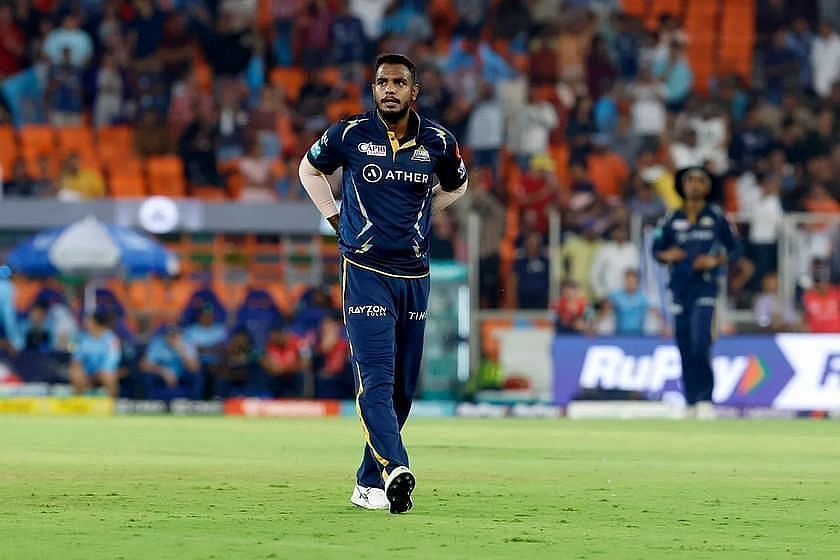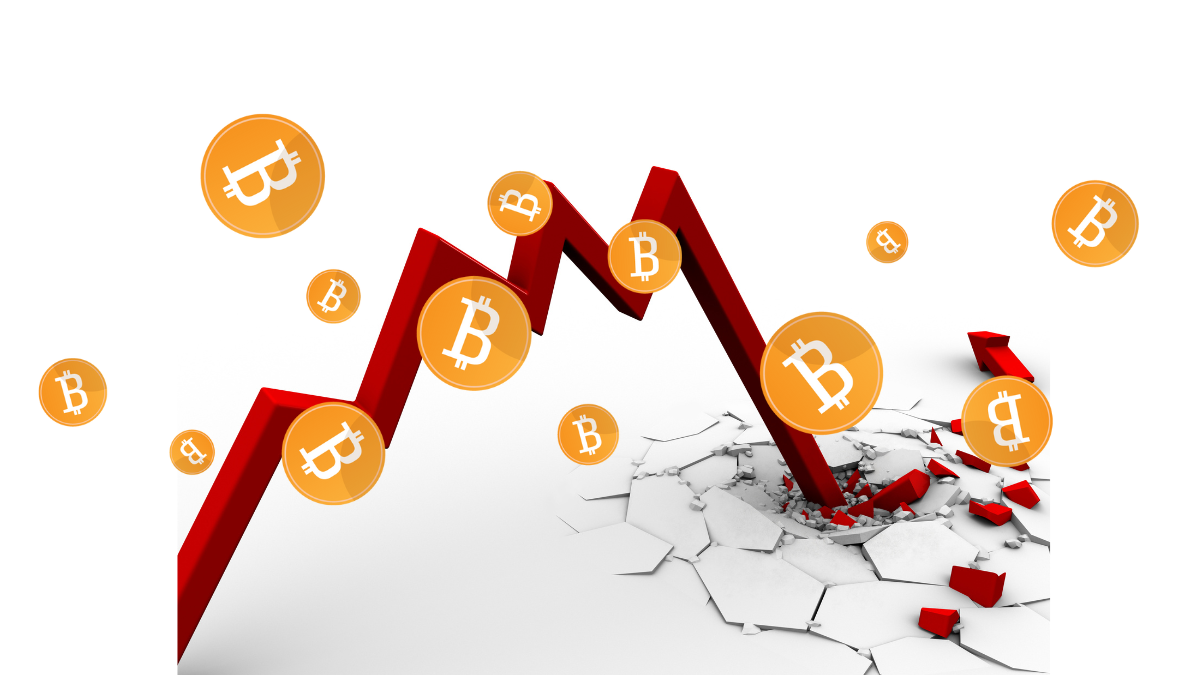Corteva, Inc. (NYSE:CTVA) Morgan Stanley’s 11th Annual Laguna Conference Call September 12, 2023 2:40 PM ET
Company Participants
Chuck Magro – Chief Executive Officer
Dave Anderson – Executive Vice President and Chief Financial Officer
Conference Call Participants
Vincent Andrews – Morgan Stanley
Vincent Andrews
Hi it’s Vincent Andrews, Morgan Stanley Chemicals and Agricultural analyst and welcome back. We’re happy to have Corteva with us and we have CEO, Chuck Magro and CFO Dave Anderson with us.
Before we get started, I’m just going to read these disclosures and invite you to see the Morgan Stanley Research Disclosure website at www.morganstanley.com/research disclosures. And if you have any questions about those disclosures, please reach out to your Morgan Stanley representative.
Well thanks guys for coming. Great to have you. Obviously, interesting times in agriculture as usual. And I think what I’d like to do with our time today is sort of start with sort of this building bear case that’s out there in the equity market that we’ve been through the very high corn price environment, and that sort of led to Ag companies over earning over the past couple of years, and now with corn and soy prices off their peak, but still well above historical levels.
I think there’s concerns about the recently revised 2023 guidance, and there’s also concerns about what’s going to happen to seed and crop chemical pricing into next year, and how do we actually still bridge out to your 2025 numbers that you provided at the Analyst Day about a year ago. So, I’d like to get into all that stuff, and maybe we’ll start with the 2023 guidance.
as I look at it, year-to-date seeds have been nicely ahead of plan, crop chemical industry obviously going through some unprecedented global synchronized destocking, if you will and here we are to, kind of coming to the close of 3Q, so what gives you confidence that we’re going to see the improvement in crop chem volume that you forecasted for the balance of the year as we sit here today?
Chuck Magro
Yes. Thanks Vincent. Hi, everyone, nice to be here. Let me start maybe by just saying we think 2023 is going to be another really good year of growth for Corteva and we’re still very comfortable with the revised guide that we provided at the end of the second quarter for the second half of the year. And if you step back and you think about that, the first half of the year and Dave will give you some numbers in a minute, we had a very strong first half. We saw very good growth, margin expansion, and we’re expecting, when you look at it in totality over the full year to have another really good year of growth.
So what’s needed for us to accomplish the second half guidance that we laid out is really I think, that when you start thinking about it, quite conservative assumptions. So in CP, we don’t need a significant volume growth that would be sort of unprecedented. We certainly don’t need incremental price in CP. And then when you think about seed for the second half, we’re actually expecting to see flat to modestly down acreage in Latin America with some price because the pricing conversations are happening right now and we can talk about price, but when you put all that together, we’re very comfortable that the 2023 second half guide that we provided is achievable.
And the final thing I’d say is, before I hand it over to Dave, just to give you some more specifics is thank goodness that we made the strategic portfolio decisions that we made last year, because what we’re seeing right now in CP is really affecting a large part of the industry, but really the commodity part of that overall index is really what is being pulled back from a destocking perspective.
And if you look at our portfolio now we’re at 55%, 56% of what we consider to be differentiated or unique technology. That number is going to move slowly up to two thirds by the time we get to 2025. So there’s a lot there that we like about the portfolio decisions that we’ve made. So overall, I’d say we’re quite comfortable with the guide and then for the value creation framework that we’ve laid out for 2024 and 2025, we’re well on track for that as well.
So may be over to Dave just to give a little bit more specifics.
Dave Anderson
Yes, a couple of things maybe Vincent that I can add to what Chuck just said. Just as a reminder, obviously we grew revenues by 1% in the first half, that is in the face of the crop chemical destocking phenomena that the industry has experienced that we communicated I think pretty effectively. EBITDA up 8% and margins were up over 188 basis points and that’s a key indicator for us.
The EBITDA margin rate is something we’re very, very focused on and that delivery in the first half is very significant. Now, roughly round number is about $3 billion of EBITDA in the first half to go to get to our range, let’s call our range, just simplify three five to three six. To get to those numbers for the second half. Let’s call, let’s just call it around $600 million really is significantly as Chuck said, is really the continuation of the strong seed performance. And while the numbers are improved in crop protection, it’s really timing related to Latin America and specifically Brazil.
As you recall that, we called that early in the year that we were going to shift back to more of a pre-2022 level kind of order pattern for Brazil. So the fourth quarter will be important for Brazil and significantly for us also the contributions from our acquisitions and biologicals acquisitions. So we’re really going to make all of that second half in the fourth quarter. That’s one of the important things just in terms, just to reinforce that in terms of our guide.
The other thing I think that’s notable that we’ve talked about in addition to the margin expansion and that performance that we’re talking about for the year, is our performance also on cash flow. Our cash flow guide continues to be in the $1.1 billion range, call it about a 30% conversion against that EBITDA guide that I mentioned earlier. And based on the strength of that cash flow, and based on, what we see right now in terms of, let’s call it the intrinsic value of the company and the outlook for the company against the backdrop of where we’re trading today, we’re also increasing our share buyback.
So we had guided initially to $500 million for the full year. You may recall we did about $330 million through the first half. So now we’re looking at more like $750 million for the full year. So that’s another key point I think, for investors to take note of in terms of our performance, not just continuing to grow, as Chuck said, and deliver the margin expansion, but also the cash flow and the competence that we have of the outlook going forward.
Vincent Andrews
Okay. Maybe just two more things about the back half of the year, then we can move on. One in, in crop count my recollection is that the volume is really loaded to the fourth quarter versus the third quarter. So are you seeing the trends playing out along that expectation? You have confidence in that ramp in 4Q?
Dave Anderson
Yes, we do. And I’ll just mention very quickly, Chuck said it, I referenced it briefly. It’s very much LatAm and Brazil specific related, but what we’ve seen there is this just in time order pattern. Now we’ve got a big September we need to deliver against the third quarter. We’ve got a big fourth quarter, but that’s all contemplated within our guide.
Vincent Andrews
And within your guide. And on the seed side of the equation, the order book is playing out as expected. There’s been some rumblings. I know, Chuck, I think you mentioned that the corn acres are probably going to be down. But just that the farm economics there against the diesel cost increase and against some adverse basis and so forth, like there’s still going for the high quality seeds. There’s no change in behavior in terms of purchasing?
Chuck Magro
No change in behavior. In fact right now is the time of year where we’re having the pricing conversations. We put our, what we call our price cards out, those conversations are happening as we would expect them to. And we are expecting to continue to be able to price for the value that the seed brings. And there’s no switching to speak of in, any shape or form because in times like this, farmers are really going to prioritize productivity and yield and in order to do that, they have to invest in the top technology. So there’s no switching. The conversations around pricing for the next season are happening right now and I’d say all of that again is factored into our guidance and kind of the framework that we laid out last year.
Vincent Andrews
And just to be clear, that’s a comment on LatAm or that’s kind of on LatAm and North America?
Chuck Magro
Both conversations are happening now, right? So my comments are for both markets, pricing for next year is well underway right now in North America. And then of course pricing conversations for what we call the summer crop for corn for Brazil is well underway. And actually there’s a little bit of discussion around Safrina for next year as well. So all those conversations is typical to have that now and I’d say there’s no real surprises, right? When it comes to how, we think about pricing for next year’s corn and soybean crop.
Vincent Andrews
Okay. If we stick with crop chems then into next year, I think the general consensus is that destocking is going to linger into the fourth — first quarter of next year. Maybe it’s going to be more around the edges rather than sort of the full throttle that we’re seeing in the second half of the year. But how do you think about the progression of 2024 on crop chem volumes? And are you going to be able to grow volume in 2024 in aggregate, and are you going to be able to hold price or how is that going to play out?
Dave Anderson
Maybe I could speak a little bit to the volume side of it, and I think you captured it well, Vincent, in that, in your introduction there, in your comments. We are seeing really evidence today of a significant now, call it reduction in that destocking phenomena. In other words, inventory that’s being held at the channel is coming down rather significantly. And importantly too, overall, the stability in terms of the, if you will, the farm demand, farmer demand and applications. So the combination of those two, Chuck uses the term transitory, we very much feel this issue, this destocking phenomenon is transitory with the majority of it, we think will have been worked through over the course of this year.
Three things that I think set us up very well for next year. Number one of course, is the biologicals acquisitions. These are real businesses, as you know they’re performing quite well and that is going to continue. We see growth continuing into next year. We held them as you know we closed on those transactions March 1 and still in particular, we’re seeing strong momentum, strong growth. That will benefit us next year.
Second thing is new and differentiated products. You recall the target that we had for this year in the crop chem space was around 55%, 56% of our revenues. That’s going to, go up to 60% next year. That’s also going to be wind at our backs because that’s very important for us, not only from a volume and revenue standpoint, but also from the standpoint of gross margin. And the third thing is our Spinosyns franchise. As you know, that franchise is long and tenured and continues to perform quite well. We’ve added additional capacity. We’re going to benefit from that again in 2024. So it’s going to see growth from that as well. So those are elements of the outlook that give us confidence in terms of volume growth for the crop business for next year, coupled with that backdrop that we talked about in terms of, we think the majority of this issue the destocking phenomena will be behind us.
Vincent Andrews
Okay. Yes, you mentioned Spinosyns. There is some concern out there in the investor community about generic insecticide and the potential that there could be a step up on that next year. If that actually did happen and that’s a big if, how would you think of that impacting the Spinosyns franchise?
Chuck Magro
Yes, so a lot of the times, because Spinosyns is a microbial based insecticide, sometimes people think that there’s a sort of a competitive either or when it comes to that, or some of the other products, for example, like the Diamides. But because of insect resistance, farmers actually rotate. So they’ll use the Diamide one year and then they’ll use the Spinosyns another year. So to answer your question, the way we think about this is that if more Diamides are used, whether they’re generic or not, it really doesn’t matter to us.
That’s actually good for the Spinosyns franchise because what will happen is, is eventually the insects will get a certain degree of resistance and they’ll have to rotate to the Spinosyns franchise. The difference between Diamides and Spinosyns, the real big difference is the Spinosyn is a microbial based insecticide. So it’s a living organism that we have refined and bred and engineered to be very effective. So when you start thinking about that, it’s a very different set of tools that farmers have and that’s why they use it as a complimentary system with Diamides over time.
So we really don’t see it being a situation where there’s going to be pressure on the Spinosyns growth. In fact, if you look at our plan last year we debottlenecked our capacity by 50%, and that is ramping up quite nicely and the reason we did that is because the Spinosyns business that we’ve had has been really sold out for so many years. We needed to add additional capacity, and that is going to ramp up over the next few years and we’re very pleased with the progress.
Vincent Andrews
Okay. And Spinosyns in general, I think is a sub 10% of your crop chem sales?
Chuck Magro
That’s right. If you look at our entire sort of IP portfolio, we would be one of the companies in the world that, I’d say has the deepest and broadest IP in agriculture. Just to give you some numbers, we have somewhere north of 17,000 patents and we have another 4,400 patents pending. So we’re always bringing patents in and some patents are rolling off. And the largest AI that we have that would affect revenue would be the Spinosyns franchise. Again, it’s grown from $700 million just a few years ago. This year it will be very close to a billion, but that’s still less than 5% of Corteva’s revenue.
So we don’t have a lot of eggs in any one specific basket. We’ve built a very nice, broad and deep IP portfolio, and since 2017, actually we’ve brought nine new AIs into the market, and in the next decade we plan to bring another nine. So this is one of the things that I think sets Corteva apart when you start thinking about new and differentiated technology coming into the marketplace and the IP around that technology.
Vincent Andrews
Okay. Maybe shifting gears a little bit, the other big sort of story over the last couple years has been raw material costs. And in our model, I estimate that you had over $1 billion dollars of cost inflation in crop chems from raw materials, from logistics and so forth. You may or may not like that number, but that’s what I’ve got. And you had EBITDA in 2023, or we think you’re going to have EBITDA in 2023, about $1.65 billion. So that’s pretty stark. The fact that that increase in costs, right was so large and I’ve also modeled, or I’ve seen the model that you’ve priced in excess of that inflation by now and returning from inflation to deflation. So can you talk a little bit about that basket of raws and the freight and logistics, how much it could possibly, it’s probably not going to go back to 2019 levels or close to it, but it’s probably going to come down from 22 levels. So how do we think about that flowing through timing wise, order of magnitude, and then how do you deal with the price side of that equation?
Dave Anderson
Sure. Well, first of all, I want to say your numbers are pretty good numbers so that’s good. So just to build on that, our expectation, and we’ve chatted about this briefly at our second quarter earnings release, but our expectation is for, I’m going to call it deflation for the second half for the crop chem business and we’re seeing that right now. We’re seeing that in the form of the freight logistics, but also packaging. Those are sort of, you would think about those as some of the leading items and items that we’ll be able to take advantage of. But we’re also sending an input and ingredient costs.
Now it’s somewhat muted by the fact that we’re carrying a fair amount of inventory as a result of this destocking phenomena. We’ve been very public about that. That’s going to take a while to work its way through. Therefore, take a little while in terms of seeing the full benefit in terms of cost of goods sold. And the other thing is, we’ve cut back obviously significantly on procurement, and that’s because of just plant capacity utilization and the whole, again inventory factor.
But on both the crop chemical business as well as on the seed business, we see cost favorability then continuing into 2024. It will be even more significant we think in 2025. Different reasons for each business. There’s a, call it a multi-seasoning layer and cost of goods sold for the seed business, plus we do commodity hedging. And in the crop business that’s really related to this phenomena of just timing of the inventory transitioning to cost of goods sold and through the P&L.
But maybe just to put a little bit of plug in for costs at the enterprise level, we targeted, as you may recall, at the Investor Day a year ago, $400 million of cost and productivity improvement, 2023, 2024, 2025, so a cumulative 400. We’ve actually generated, we’ll generate $300 million of that savings this year, benefit of our productivity, but also the restructuring you’ll recall we did in 2022 that’s flowing through and benefiting 2023. So $300 million of that $400 million will already be accomplished. We think we’re on track for at least another $100 million in 2024, so a year ahead of schedule.
So against the backdrop, and it kind of goes back to one of your opening comments in terms of our multi-year outlook and plan, one of the things that we’re very focused on as you know, what are the levers, what are the controllables that we have? One of those is on the cost side. So clearly this running ahead, this acceleration of performance is going to really support us in terms of our overall EBITDA earnings and our margin targets that we’ve put out.
Vincent Andrews
So, you’re using the word ahead of plan on the cost productivity? I sometimes use the word above plan. So do you think, well, they’re two different things, right? One implies that the number could be higher than which you originally said, the other one just said you’re going to get there faster, right? So which is it?
Dave Anderson
Well, it’s probably a little bit of both. And you’re right and we’ll have the opportunity to update all of this later, particularly as we fine tune our 2024 outlook. Right now, it’s giving you more directional, we’ll be preparing our detailed plans and budgets shortly. Okay? Communicating that.
Chuck Magro
Yes. Vincent, just on that, so we’ve been really focused on delivering the value framework for 2025. At the innovation session we held earlier this year we kind of gave a little bit of view on sort of where we think the journey is from 2025 to 2030. And we think that that is a really exciting story to tell. We’re not quite prepared to kind of give it all today, but we will have another investor session most likely next year where we’ll give more financial framework extending whether we go all the way to 2030 or not, we’re not entirely sure, but that journey is equally as exciting as what we’ve — the path we’ve been on.
Vincent Andrews
And just getting back to seeds, I think, Chuck, you mentioned earlier you were feeling good about the seed pricing discussion for North America which obviously is just getting underway for the 2024 season. But we did some work back in June looking at Corteva and its predecessors seed pricing and our findings were that even as we went through that really deep trough of the Ag cycle from 2014 to I guess early 2020, I found no evidence that seed pricing ever declined in the Corteva portfolio. Is that correct?
Chuck Magro
Yes, that’s right. So if you take the last 10 years and it’s a — the 10 years it’s a good, because there was an Ag cycle in there. We had years, and if you just use corn as the proxy, we had years last year, 650 corn, right? So everybody’s making money. That was a record. But we also had years of $3.30 corn, which are tough years in agriculture, right? For farmers. And in any of those 10 years, we did not have negative pricing for corn.
And the question that you have to ask yourself is, well, why is that? And the reason is because every year what we do is, we bring new hybrids into the market for farmers to use, and those hybrids generate what we call generic gains. So yield on the farm of one, two, three bushels per acre if we’re talking about corn, and we price to share in that value. We don’t capture the lion’s share of it, but we — farmers want us to take that that money and keep reinvesting.
And just to give you a couple other numbers, so next year we plan to bring 200 new hybrids for corn and soybean around the world, and that’s what we need to do. And in farming conditions like this, that’s what farmers would expect from us, is to see the new hybrids, to plant them, to get another couple bushels per acre, because, and often oftentimes that is really what’s going to drive their profit.
Vincent Andrews
Yes. And just maybe dig into this a little bit more. We talked about it the same way in crop chem. Like I look at the pricing and the COGS and seed, and what I see is that, since 2019, I think that the seed price CAGR, I see is about 6%, which is a higher CAGR than maybe is traditional through the cycle. But that’s because I see about a $1.5 billion of cost of goods sold inflation during that period of time. And when I net those two things out, I get your net pricing beyond cost to be a bit better than 2%, right? And when I think of 2%, I think of sort of that algorithm I always had in my head about what you just talked about, Chuck, which is the new hybrids coming in at higher prices, the old ones going out at lower prices, getting that low single digit-ish pricing algorithm. So, as we move into this deflationary period, can you help us understand how your seed production costs will come down and over what period of time? And we should still then be expecting that price mix algorithm to flow through even in a declining cost consult environment.
Dave Anderson
Yes. I mentioned that earlier, is that the in any year, the seed costs are really a combination of several seasons, right? Because we’re contracting and then purchasing the seed, and then it’s layered into year-over-year. There’s a carryover factor and there’s the commodity cost hedging that I talked about. So we’re set up nicely, we think now for 2024 in terms of cost reduction, which is going to be nice and get back to the sort of the price for value that Chuck mentioned combined with the lower cost of goods sold, and then the setup will be even we think even more positive, obviously given where commodity costs are right now, commodity prices are right now for 2025. So we think that all looks very good for us again, and it’s not, it doesn’t take heroic pricing to be able to accomplish our margin goals and to accomplish the kind of earnings growth that we think we can deliver during this period.
Vincent Andrews
Last question from me on this is just, I think USDA is up to like 95 million acres for corn for this year. It seems hard to imagine we’re going to do that again next year. I don’t know what the number’s going to be, nobody does, but it’s probably I’ll bet pretty nicely against 95 lower, not higher. So what’s the mix effect for you and how do you manage that next year if we go back more to soy than corn?
Chuck Magro
Yes. Dave can give the sensitivity, but what I’d say is, it looks to me like if crop pricing were to hold as though they are today, you’d probably see marginally less corn acres and more soybean next year. I will say look, Corteva likes corn and soybeans. We’re a technology company. Our soybean franchise this year under the Enlist brand became the number one U.S. selling brand and we’re very proud of that. It’s on over 55% of the U.S. acres. And that now is going to set us up to continue to drive. We have a hundred licensees today. We’re going to continue to be able to out license that soybean technology.
At the same time, we’ve got some approvals now for our corn Next Generation traits. We call them PowerCore and Vorceed and that’s going to allow us, again, to out license our corn technology. So corn and soybeans, we’re almost indifferent. There’s a small financial advantage to corn acres, but on the fringe and where we’re heading as a company, I don’t think it really matters as long as we see good corn acres and good soybean acres, which I expect we’ll see for the foreseeable future.
The strategy for our seed business is really to become an out licenser of our next generation technology. That’s really what’s going to drive margin expansion and bottom line growth. And we’re — we’ve got a lot of those approvals now in place. The seed is performing exceptionally well in all these markets, and we’re having great conversations with partners that want to license the technology and that will be another huge benefit for us as we get into 2025 to 2030. And Dave, maybe you can just give the sensitivity corn, soy.
Dave Anderson
Yes, I mean, historically, that’s exactly right. There would’ve been this advantaged situation that’s beginning to narrow. I’m talking about now corn acre versus soy acre for us, soybean acre for us, that’s beginning to, that gap is beginning to narrow. And very importantly, just kind of back to the royalty equation, I’ll use another running ahead of plan here demonstration that you recall, again, $250 million cumulatively in terms of particularly expense reduction or think of that as in licensing expense reduction over that 2023 to 2025 period.
Well, we’re going to do $150 million this year. We think we’re on track for probably at least a $100 million next year. So again, I think we’ll be, a year early in terms of that performance that also plays into this lessening of this mixed differential between the acreage. So it’s important, it’s in the equation., but we’ve factored that into our early thinking. We think, again, it’s going to be another very good year for seed.
Vincent Andrews
Excellent. I think we have time for a question or two if anybody has one. Do not go at once.
Unidentified Analyst
Okay, thanks. Just on this royalty front, can you guys just talk a little bit about, it’s a, we haven’t heard you talk too much about the royalties actually flipping to positive. So can you talk in sort of, I don’t know, end of the decade, how do you think that sort of plays out? I mean, you guys have, you’ve talked about royalty savings, but you know, I just heard Chuck sort of talk about incoming royalties.
Chuck Magro
Yes, so we’re not quite prepared to go that far yet. We’re firmly focused on sort of the walk towards neutral, and we think that that will happen most likely around the 2030 timeline. At this rate if we can keep it up, it would actually be maybe a year or two before that. And then once we get there, we can start talking about out-licensing in terms of being positive. But we will always, as a technology company, need to in-license certain technology because it’s incumbent on us to provide the very best technology, whether it’s ours or others to our farmer customers and so it’s not really practical to think that we would shut off all in-licensing. But what we want to be able to do is be eventually if we can get to 2030 and get to neutral, then we would love to become an out licenser, because that market is rather large and I think that it would be really quite an attractive opportunity for Corteva. And we’re just — we want to stay focused on what’s really in front of us and for now that is the $250 million that we’ve committed to by 2025 going then to neutral by say 2030, maybe a year or so before that and then we can talk about going positive post 2030. Welcome.
Vincent Andrews
Anyone else? All right, thanks guys. I really appreciate it.
Chuck Magro
Thank you.
Dave Anderson
Thank you.
Question-and-Answer Session
Q –
















